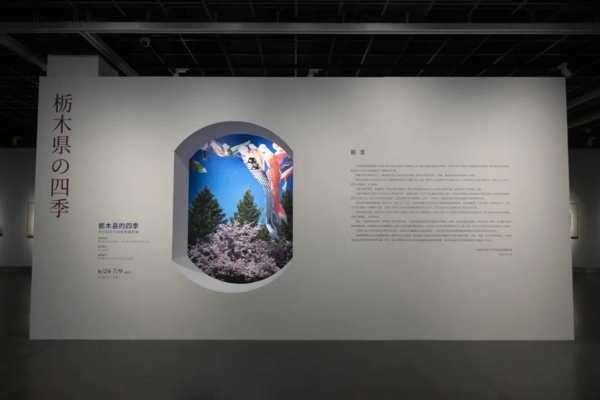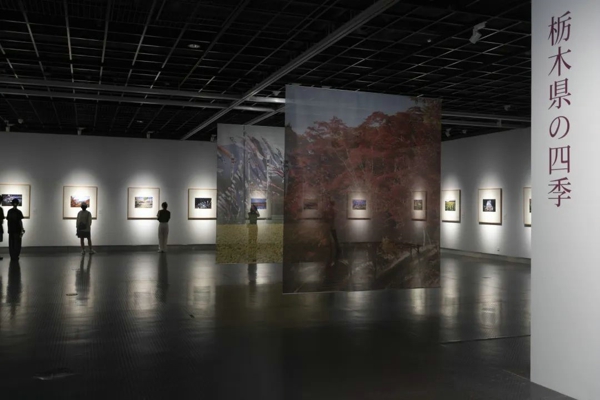Four Seasons in Tochigi Prefecture — Exhibition of Landscape Photographs for China-Japan Friendly Exchanges
pubdate: 2022/6/30 author: zjam source: zjam click:
2022 marks the 50th anniversary of the normalization of diplomatic relations between China and Japan. Since the establishment of respective exchange windows in 1986, Tochigi Prefecture in Japan and Zhejiang Province in China have gradually expanded their exchanges to various fields through a series of friendly exchange activities, such as sending provincial and prefecture public delegations, “Youth Ship” delegations, and international exchange ambassadors. The gradual deepening of exchanges finally led the two sides to an “Agreement on Friendly Cooperation” in 1993. Next year, they will celebrate the 30th anniversary of their friendship. In order to celebrate the 50th anniversary of the normalization of diplomatic relations between China and Japan in 2022, under the guidance of the Zhejiang Provincial Department of Culture and Tourism and the Department of Foreign Affairs of Zhejiang Provincial People’s Government, and with the support of the International Section of the Department of Industry, Labour and Tourism, Tochigi Prefecture, Japan, ZJAM specially planned “Four Seasons in Tochigi Prefecture — Exhibition of Landscape Photographs for China-Japan Friendly Exchanges” to display 50 photographs of the natural scenery and folk customs in Tochigi Prefecture. It is expected that the Chinese audience will be exposed to the scenery in four seasons, history, and culture of Tochigi Prefecture as if they were there. It is believed that this landscape photograph exhibition will draw the Chinese and Japanese people closer and further deepen the exchanges between the province and the prefecture and even between China and Japan.
Tochigi Prefecture is roughly located in the center of Japan, and it is 60 kilometers to 160 kilometers from the capital Tokyo. It takes less than an hour to arrive in Utsunomiya, the seat of the prefecture government, from the downtown of the capital by Shinkansen. The prefecture has a population of 1.91 million, and the people there are conscientious, diligent, and praiseworthy.
From the northern part to the western part of the prefecture, there are continuous mountains with an altitude of more than 2,000 meters, including Mount Shirane and Mount Nantai, which belong to the Nasu-Nikko mountain system. They form the Nikko National Park. During the Edo era (the first half of the 17th century) when the Tokugawa family ruled Japan, a series of splendid buildings headed by Toshogu Shrine were built and specially protected in “Nikko”, a sacred place for shogunate in the northwestern part of the prefecture. Today, the Futarasan Shrine and Rinnoji Temple in Nikko are listed as World Heritage Sites, with recognized historical and artistic value. Throughout the year, Nikko receives an endless stream of sightseeing tourists at home and abroad.
From the central part to the southern part of Tochigi Prefecture, there are vast plains where city clusters connected to the capital metropolitan area have developed, such as Utsunomiya, the seat of the prefecture government, which is famous for its “gyoza”. This region not only gathers the automobile-related industries and other manufacturing industries, but also has developed agricultural production with strong regional characteristics for half a century, represented by the most productive strawberries in Japan. These diverse industries support the development of Tochigi Prefecture.
Tochigi Prefecture is an inland rather than coastal area. Its annual average temperature ranges from 10 degrees Celsius to 14 degrees Celsius, with great temperature differences between winter and summer. Changes in four seasons can be felt obviously in daily life. The local climate is characterized by frequent thunderstorms in summer, light rains and strong winds in winter, and snow in mountainous areas. Therefore, Tochigi Prefecture, with a complex and varied terrace and diverse changes through seasons, provides attractive scenery all year round. In spring, hundreds of flowers bloom, contending in beauty and fascination, all over the prefecture, and in summer, the vast plateau in the north is lush and provides a popular summer resort. In autumn, due to the huge differences in altitude between regions, the beautiful red leaves become a lasting enjoyable sight; in winter, there are also many hot spring resorts to enjoy winter snow.




A photo taken at the exhibition
 Tel: 0571-87078700 | Site Service:0571-87078700
Tel: 0571-87078700 | Site Service:0571-87078700 Address: NO.138 Nanshan Road Hangzhou Zhejiang
Address: NO.138 Nanshan Road Hangzhou Zhejiang Opening: Tuesday to Sunday 9:00am-5:00pm, Closed Mondays
Opening: Tuesday to Sunday 9:00am-5:00pm, Closed Mondays









